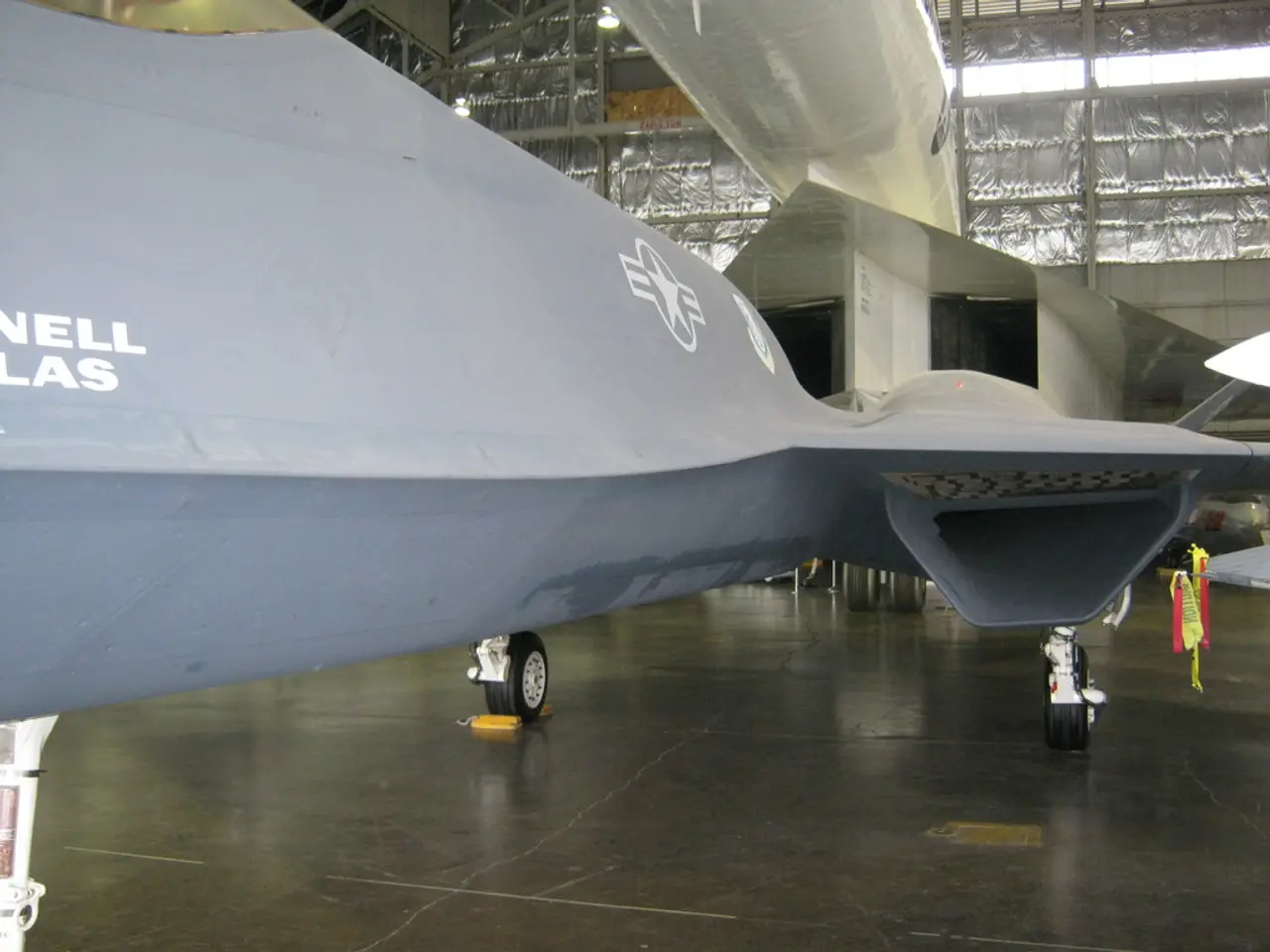China unveils secret development of third-generation stealth aircraft in latest revelation - China unearths third covert, sixth-generation jet prototype
China's Rapid Advancement in Sixth-Generation Stealth Jet Technology
China's aerospace industry is making significant strides in the development of sixth-generation stealth jets. Unlike Europe, which is yet to bring a demonstrator or prototype of a sixth-generation combat aircraft into the air, China is reportedly testing at least three distinct tailless stealth aircraft prototypes [1][2][3].
One of the most intriguing developments is the emergence of unmanned stealth jets resembling high-performance Unmanned Combat Air Vehicles (UCAVs) or "loyal wingman" drones. These drones, characterized by their absence of visible cockpits and streamlined shapes, are optimized for autonomous operation with stealth as a priority [2][3][5].
These UCAVs are expected to play a crucial role in collaborative combat operations, flying alongside manned platforms such as the J-20 or the J-50 (Shenyang’s J-XDS program). They will provide sensor fusion, force multiplication, and risk mitigation in contested airspace [3][5].
The Chinese approach emphasizes a "system of systems" architecture, similar to the US Next Generation Air Dominance (NGAD) program. This includes integrating AI-enabled autonomous decision-making to adapt missions dynamically, improve survivability, and leverage advanced sensors and networking for long-range strike and reconnaissance [3][4].
The development pace is exceptionally fast, with multiple prototypes and designs tested simultaneously. This strategic push towards a mixed fleet of manned sixth-generation fighters complemented by unmanned loyal wingmen aims to enhance situational awareness and combat options [1][3][5].
Meanwhile, China is also developing other advanced aircraft and drones, including stealth and hypersonic surveillance aircraft. The Chengdu J-36, featuring a unique double-delta wing design with three engines, is speculated to serve as both a heavy interceptor and a tactical bomber (JH-XX) [6].
The leaks of these new designs are seen as a deliberate attempt by China to showcase its technological advancements and exert geopolitical pressure on the USA and other competitors. However, some analysts question the authenticity of the leaked footage, as test flights typically do not occur over cities or at low altitudes [7].
In contrast, Europe's Global Combat Air Programme (GCAP) with the UK, Italy, and Japan aims for deployment in the 2030s. The US is also working on a sixth-generation combat aircraft program, the NGAD, and the leaks are seen as a signal to influence the debate over this program [8].
References:
- China's sixth-generation fighter jet: A look at its tailless, stealthy prototypes
- China’s sixth-generation fighter jet: What we know so far
- China's Stealthy Sixth-Generation Fighter Jet Prototypes
- China's sixth-generation fighter jet: A look at the emerging technologies
- China's Sixth-Generation Fighter Jet: The Next Phase of Stealth Warfare
- Chengdu J-36: China's Next-Generation Stealth Bomber
- China's J-36 Stealth Bomber: Fact or Fiction?
- China's J-36 Stealth Bomber: A Signal to the US?
The community policy of China's aerospace industry involves the development of autonomous sixth-generation stealth jets, which incorporate advanced technology, such as AI-enabled decision-making and stealth design, to collaborate with manned platforms in contested airspace.
Employment policies within China's aerospace industry prioritize the rapid advancement and testing of multiple prototypes and designs for sixth-generation stealth fighters and drones, aiming to demonstrate technological superiority and exert geopolitical influence.




